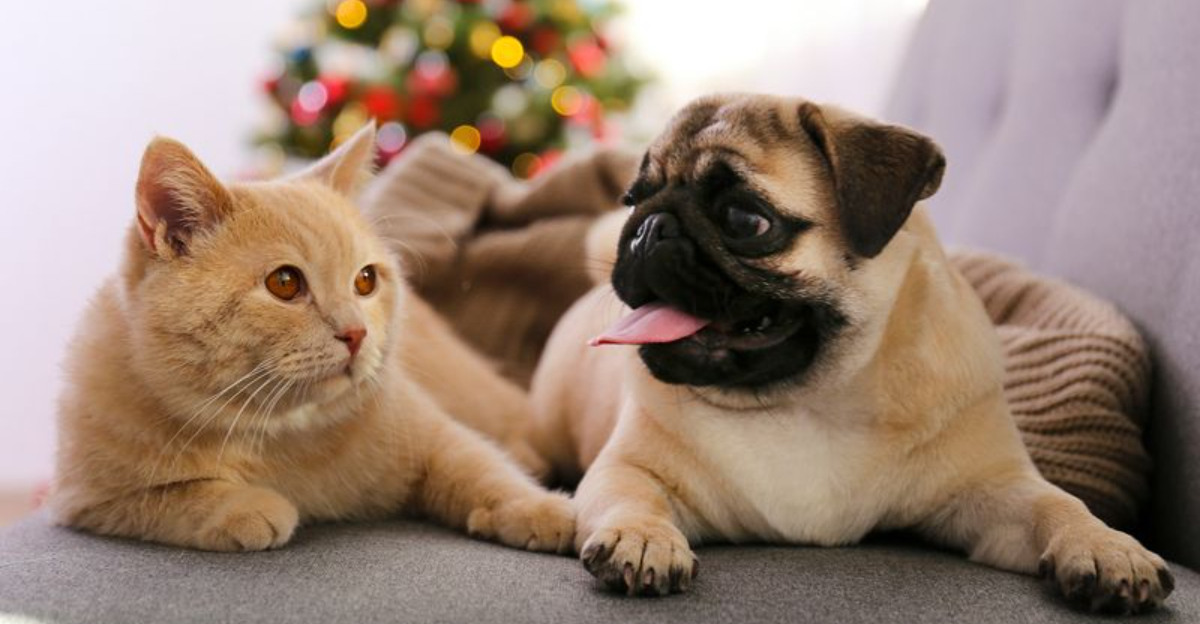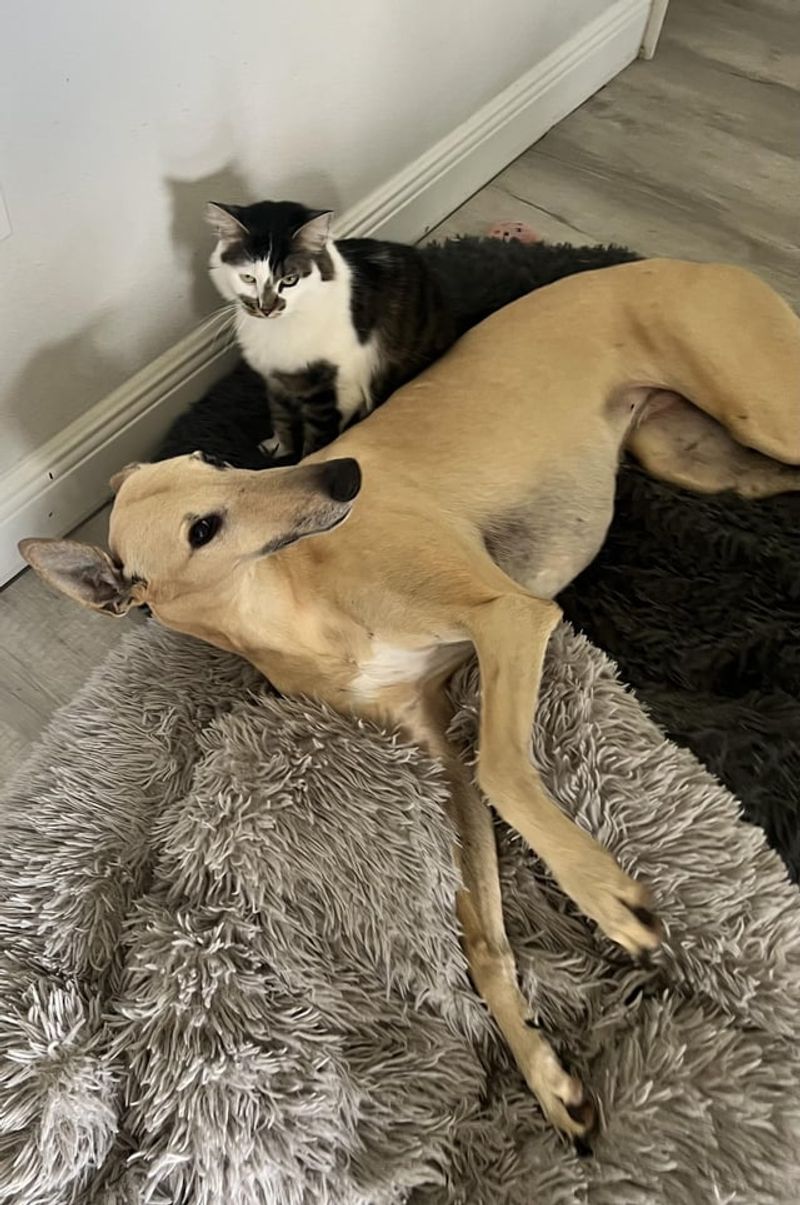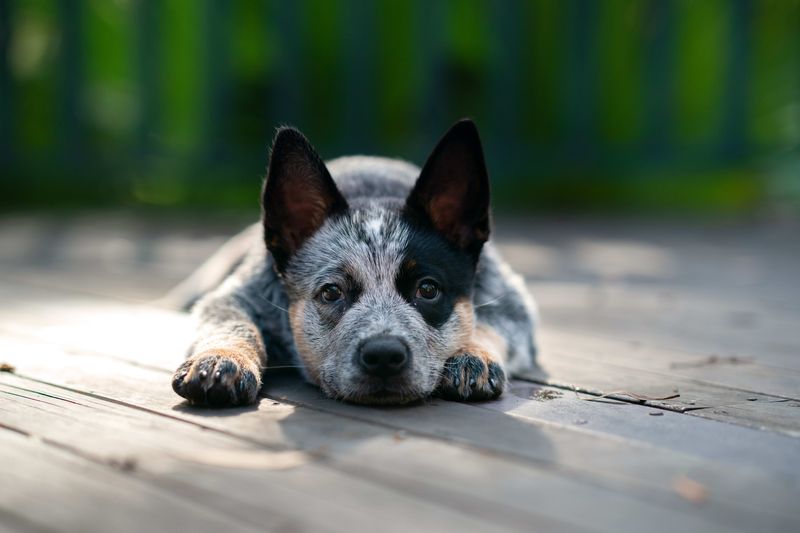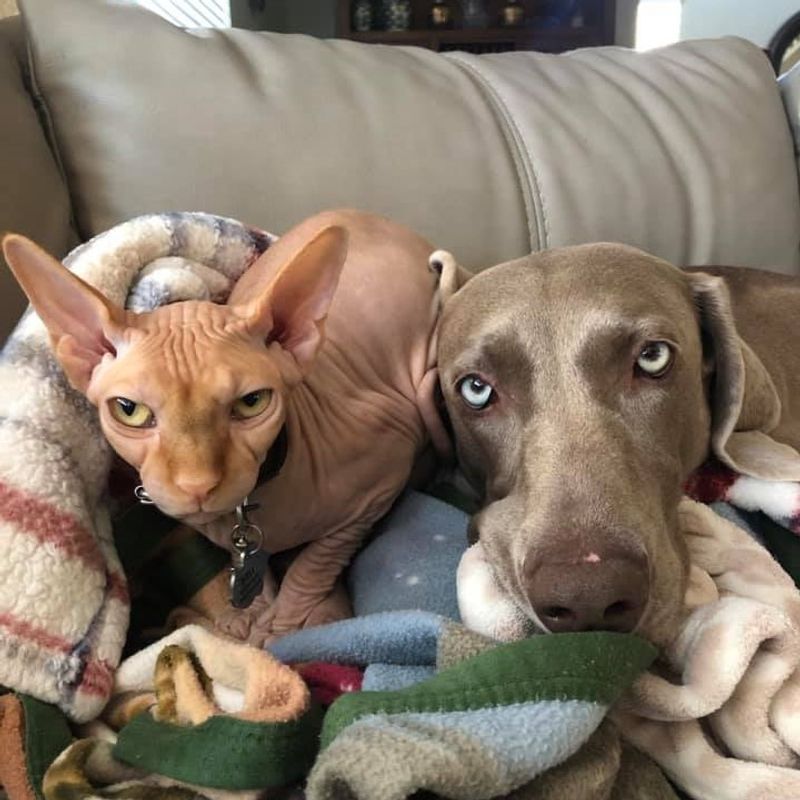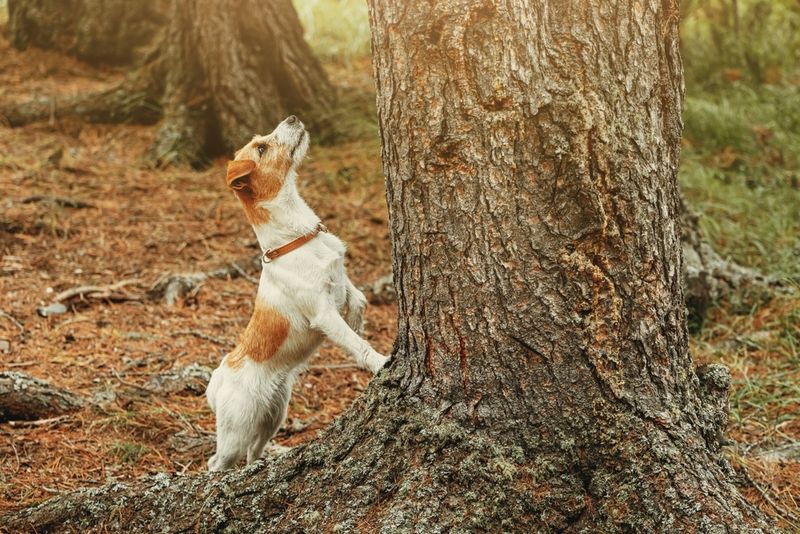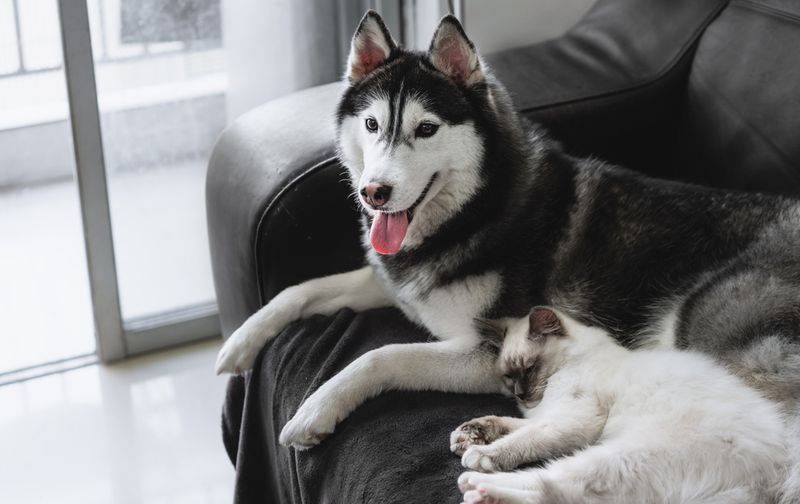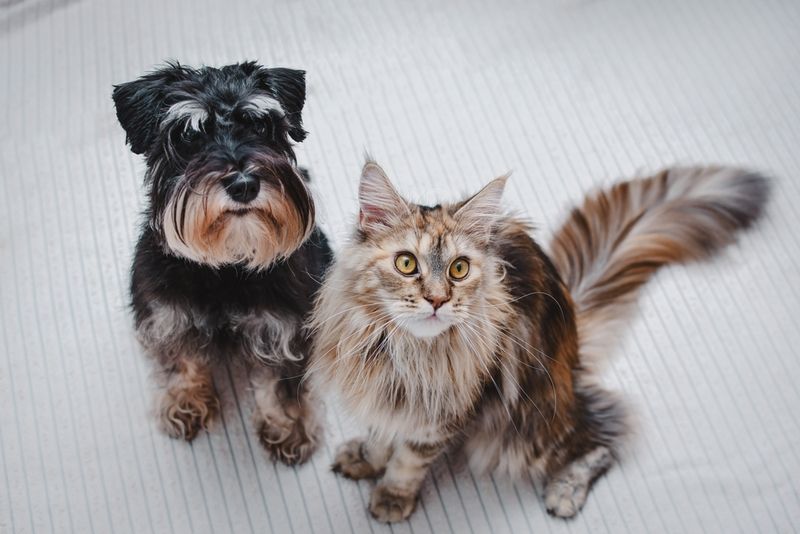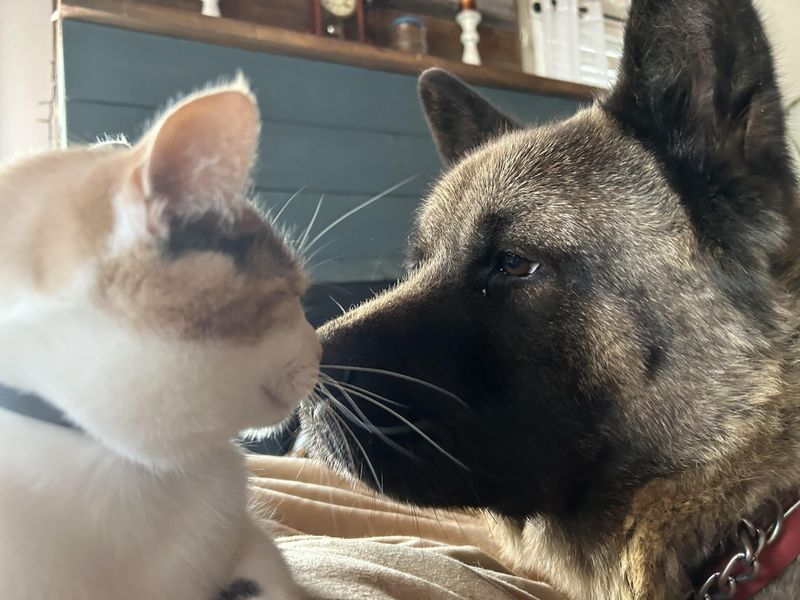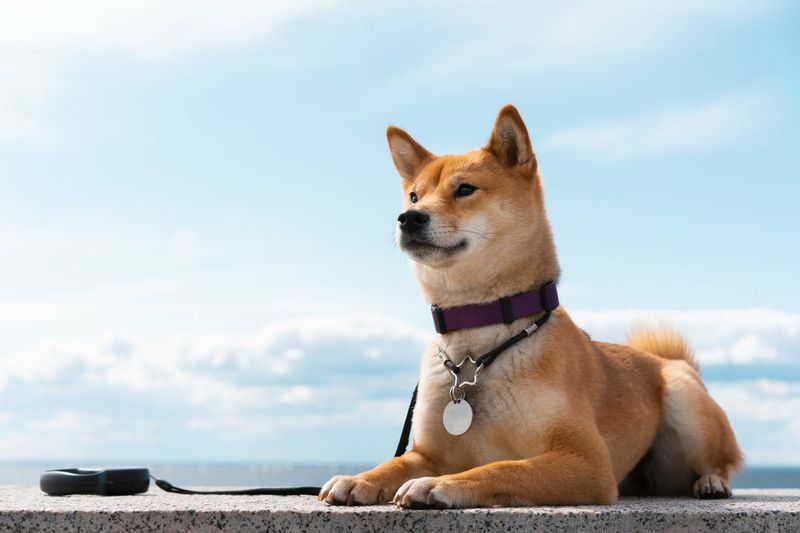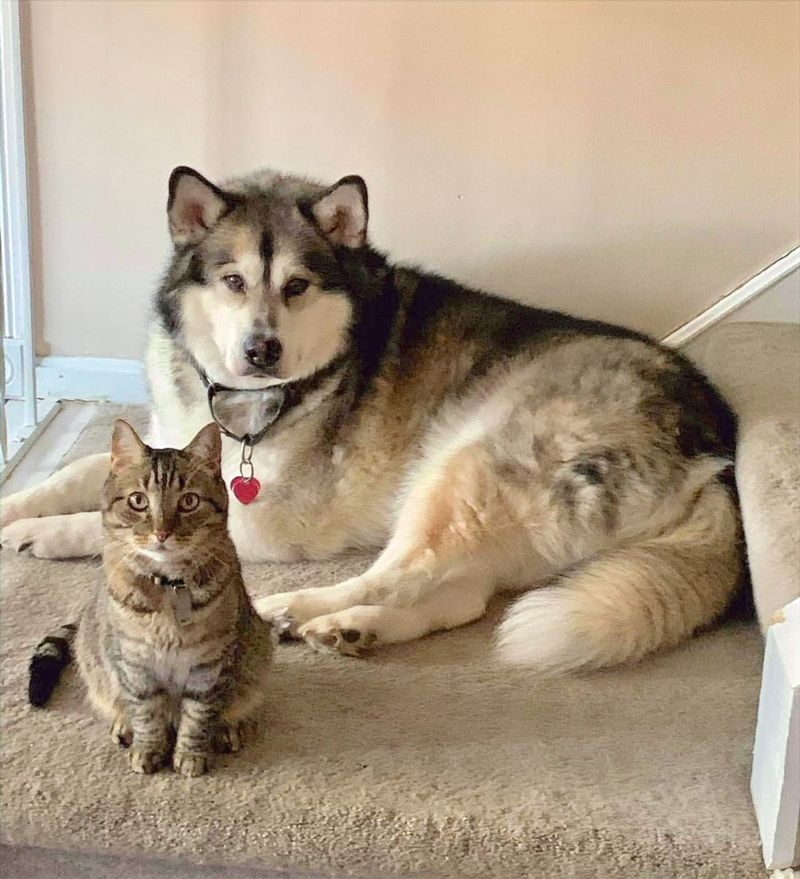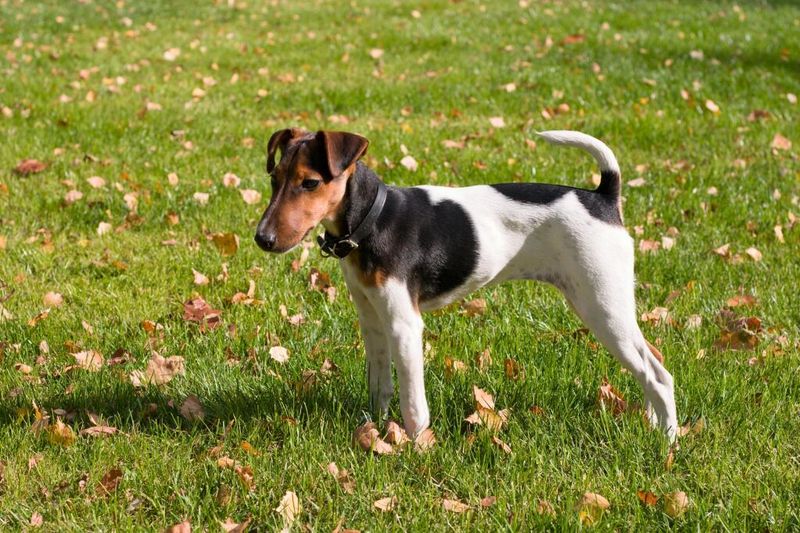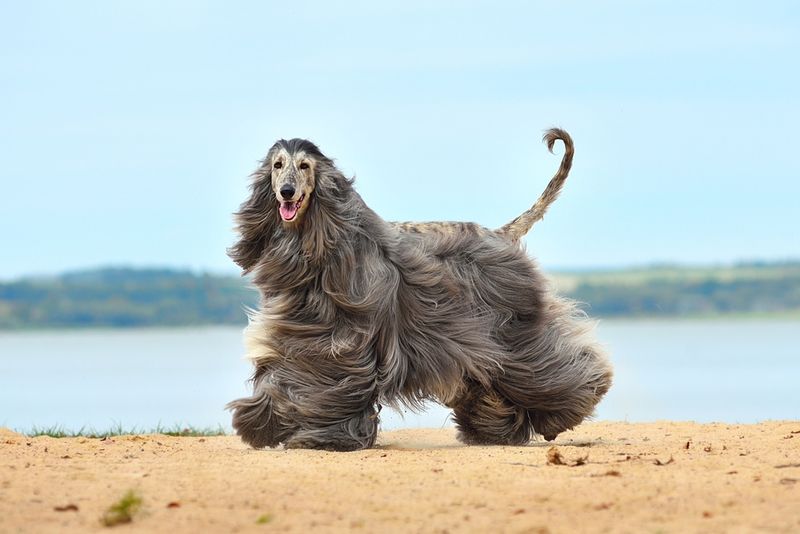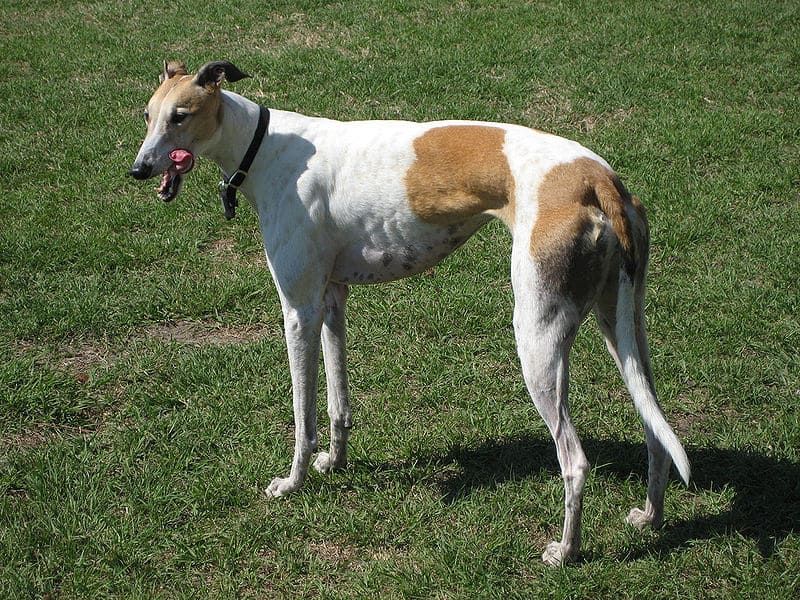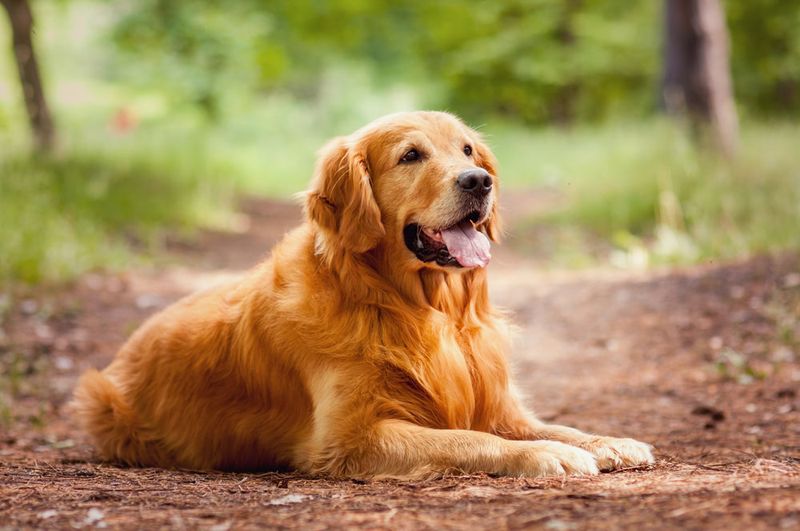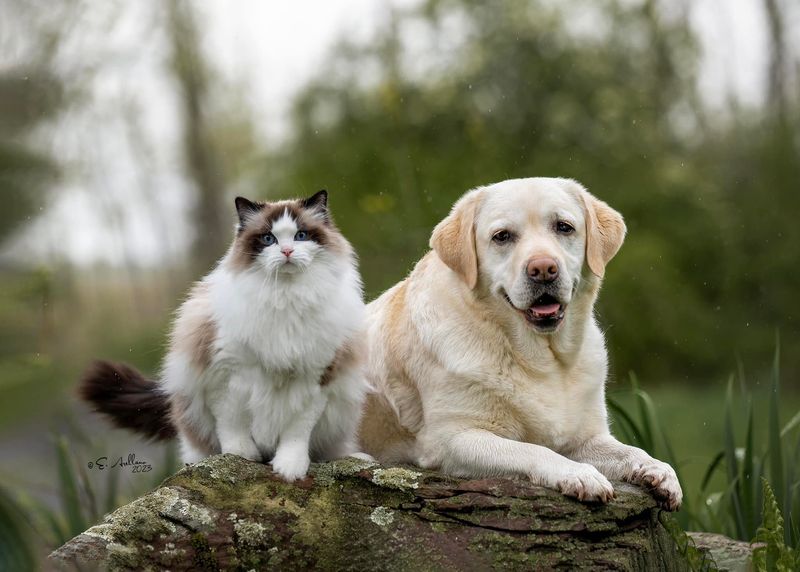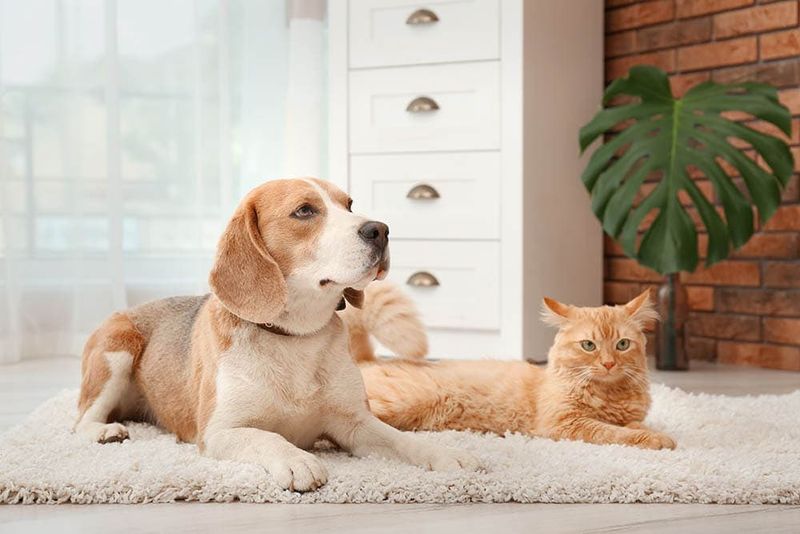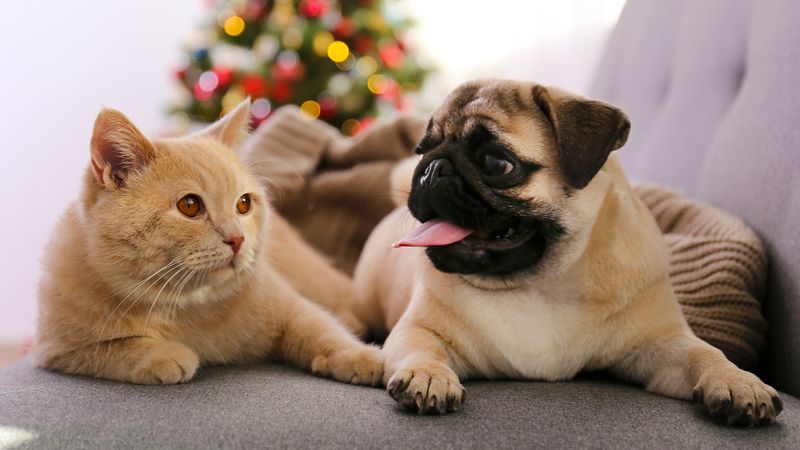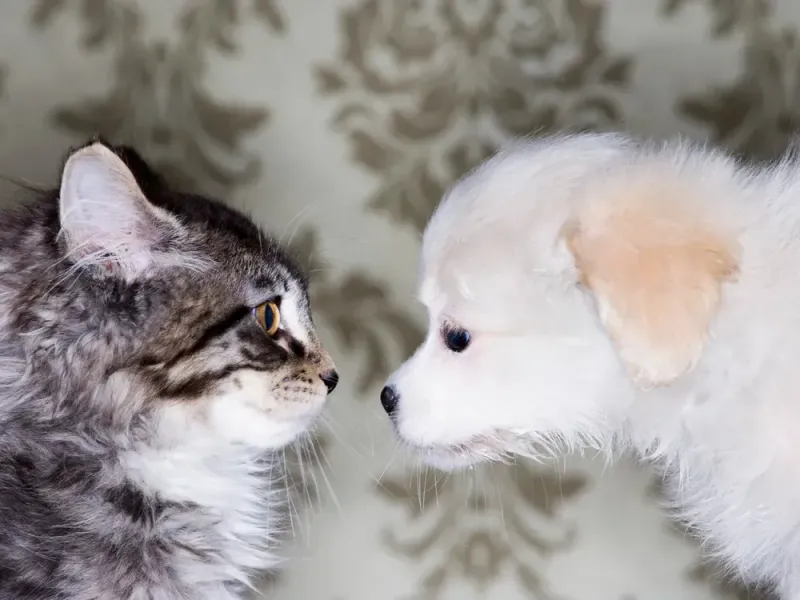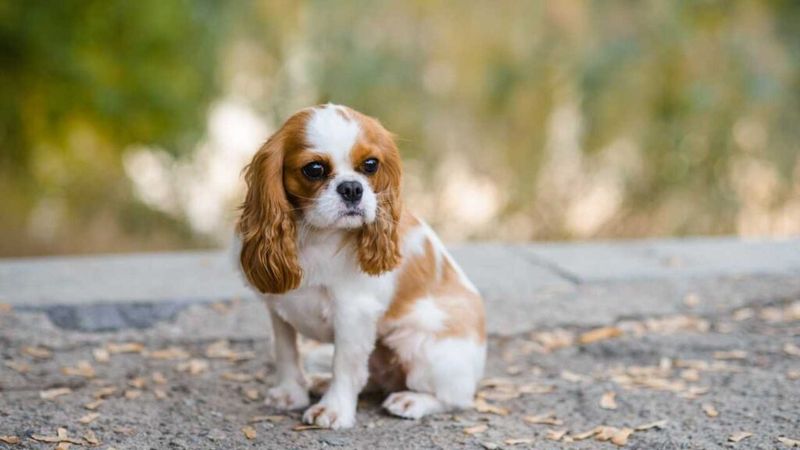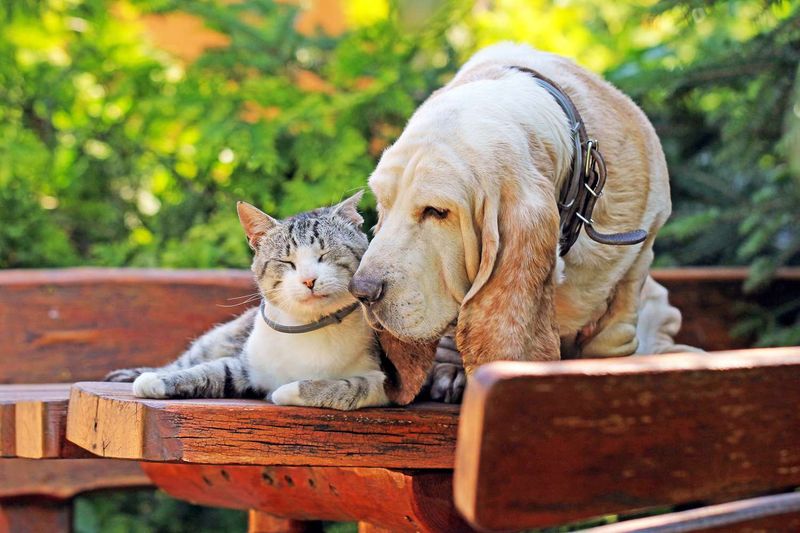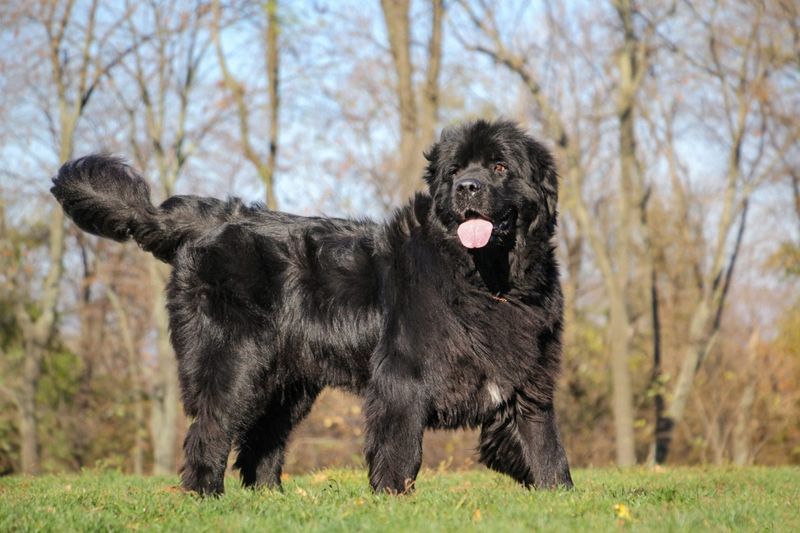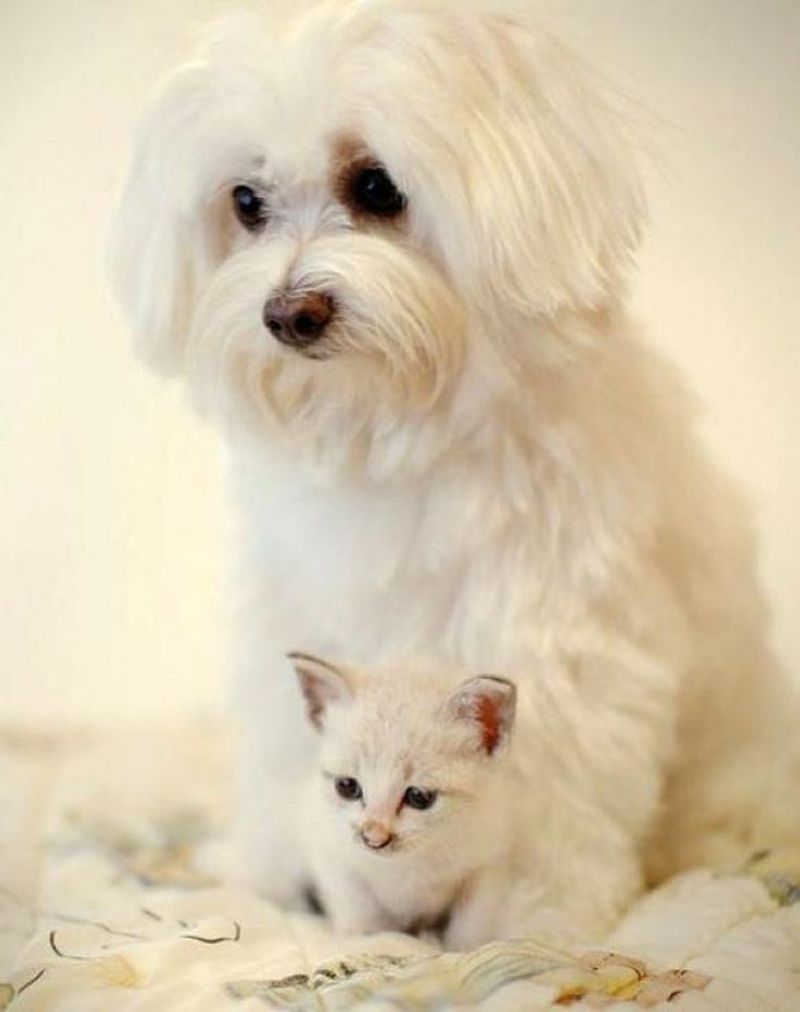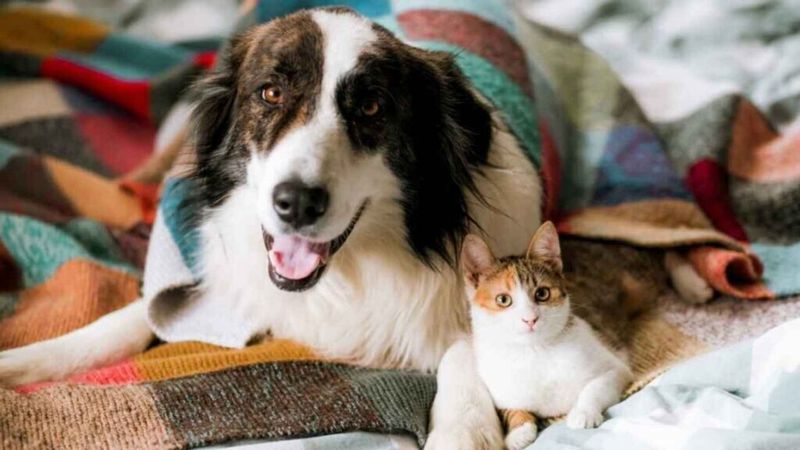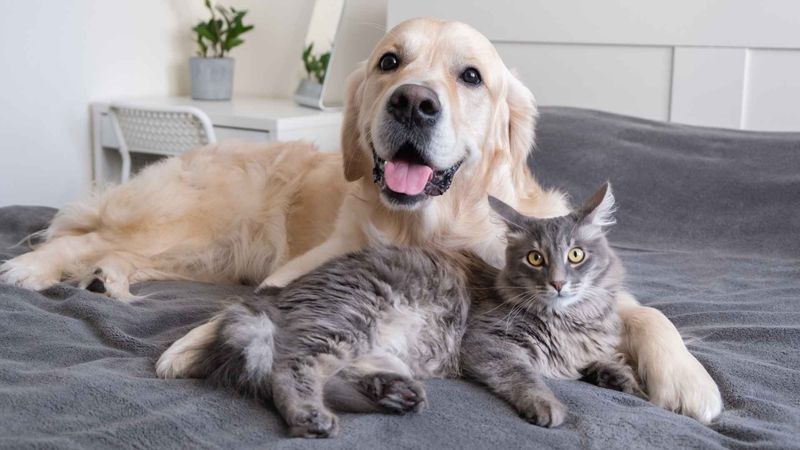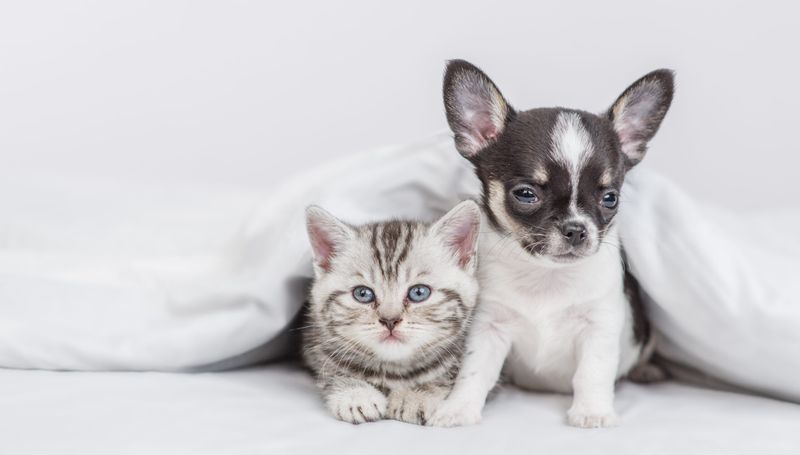📖 Table of Content:
- 1. Greyhound
- 2. Australian Cattle Dog
- 3. Weimaraner
- 4. Jack Russell Terrier
- 5. Siberian Husky
- 6. Miniature Schnauzer
- 7. Akita
- 8. Shiba Inu
- 9. Alaskan Malamute
- 10. Fox Terrier
- 11. Afghan Hound
- 12. Whippet
- 1. Golden Retriever
- 2. Labrador Retriever
- 3. Beagle
- 4. Pug
- 5. Bichon Frise
- 6. Cavalier King Charles Spaniel
- 7. Basset Hound
- 8. Newfoundland
- 9. Maltese
- 10. Papillon
- 11. Collie
- 12. Poodle
Introducing a dog to a household with cats can lead to either smooth friendships or tense encounters. Certain dog breeds have an instinctive ease around feline companions, while others may struggle due to strong prey drives. Knowing which breeds tend to get along well with cats can prevent conflicts and foster a peaceful living environment.
Cats and dogs each bring unique energies and behaviors that influence how they coexist. Some dogs naturally adapt to sharing space with cats, respecting their boundaries and signals. Others require careful management to ensure safety and harmony between all pets.
Creating a balanced home where both cats and dogs feel secure takes insight into their temperaments and interactions. Awareness of typical breed traits related to cat compatibility helps set realistic expectations. With the right knowledge, a multi-pet household can flourish with mutual respect and companionship.
1. Greyhound
Greyhounds possess a powerful prey drive that makes them instinctively chase small, moving animals. When they spot a cat darting across the room, their racing instincts kick in immediately.
While some individual Greyhounds can be trained to live with cats they’ve been raised with from puppyhood, most rescue Greyhounds have been trained to chase lures, making cat cohabitation risky. Their lightning-fast speed means they can reach a cat before you can intervene.
If you already have cats, consider a different breed unless you’re prepared for constant supervision and separate living spaces.
2. Australian Cattle Dog
The herding behavior of Australian Cattle Dogs, which includes heel-nipping, can manifest as an urge to control cats’ paths around the home.
Their high energy levels and work-oriented mindset mean they’re always looking for a job. Without proper training, your cat becomes their unauthorized work assignment. Cattle Dogs are also territorial and may view cats as intruders in their space.
Even with training, these dogs typically maintain a dominant attitude toward cats rather than forming a friendly bond.
3. Weimaraner
Bred for hunting and renowned for their keen tracking abilities, Weimaraners often carry a powerful prey drive that may cause them to see cats more as targets than companions.
These athletic, energetic dogs move with purpose and intensity that can frighten even the most confident cats. Their size and strength add to the concern – a playful moment for the Weimaraner could be dangerous for a cat.
Early socialization might help in some cases, but their natural instincts often prevail. Most cat-owning households should consider more feline-friendly alternatives.
4. Jack Russell Terrier
Known for their relentless hunting drive and high energy, Jack Russell Terriers were designed to chase small animals, which can complicate relationships with feline housemates.
These small but mighty dogs won’t be intimidated by hisses or swats. Their determination means they rarely back down from confrontation, and their quick movements can trigger chase responses even in well-trained individuals.
The Jack Russell’s natural instinct to dig, chase, and catch small prey remains strong despite domestication. Few cats appreciate this terrier’s relentless approach to interaction, making peaceful coexistence unlikely.
5. Siberian Husky
Siberian Huskies carry strong prey drives from their northern working heritage. Their wolf-like appearance hints at primitive instincts that can view cats as potential prey rather than family members.
These independent thinkers aren’t easily deterred by training when their hunting instincts activate. Their playful pouncing and chasing games might seem fun to the husky but terrifying to your cat.
Huskies are notorious escape artists, making it difficult to maintain safe separation between pets. Even huskies raised with cats from puppyhood have been known to suddenly view their feline housemates differently as they mature.
6. Miniature Schnauzer
Originally rat hunters on farms, Miniature Schnauzers have a natural drive to chase sudden movements—making them highly alert to cats’ quick actions.
Their terrier heritage gives them a stubborn streak that can make training them to respect cats challenging. Schnauzers are vocal dogs who bark at excitement, which often stresses cats who prefer quieter environments.
While some Schnauzers can adjust to cats with extensive training, many maintain their prey drive toward feline family members. Their natural alertness means they rarely miss an opportunity to chase a darting cat.
7. Akita
The protective nature of Akitas, developed through their roles as hunters and guards in Japan, can result in cats being viewed more as threats than family.
These large, powerful dogs have strong prey drives that can activate suddenly, even after months of seemingly peaceful coexistence. Their independent thinking makes them less responsive to commands when their hunting instincts kick in.
Akitas tend to be dominant with other animals and rarely back down from confrontation. Their size difference with cats creates a dangerous power imbalance that can result in serious injuries even during play.
8. Shiba Inu
Shiba Inus share ancestry with other primitive hunting breeds, giving them a strong prey drive that’s difficult to override. Their cat-like independence ironically makes them poor companions for actual cats.
These dogs possess lightning-fast reflexes and can switch from calm to predatory mode in an instant. Their tendency toward resource guarding extends to territory, toys, and human attention – all things your cat also values.
Shibas have a notorious stubborn streak that makes training them to respect boundaries with cats challenging. Their alert nature means they notice every small movement your cat makes, creating constant tension.
9. Alaskan Malamute
Designed for tough Arctic labor, Alaskan Malamutes bring significant size and prey drive that can inadvertently put cats at risk.
These pack-oriented dogs have hierarchical minds that typically place cats low in their social order. Their play style involves body-slamming and rough-housing that can injure smaller animals unintentionally.
Malamutes are notorious for their selective hearing when something interests them. This independence means your commands to leave the cat alone might be completely ignored when their prey drive activates, creating dangerous situations for your feline family members.
10. Fox Terrier
Known for their fox-hunting heritage, Fox Terriers possess lightning-fast reactions and boundless enthusiasm that often leads them to chase feline housemates.
These dogs possess tenacity that borders on obsession when pursuing moving targets. Once they’ve identified your cat as something to chase, changing this mindset requires intensive training that often proves unsuccessful.
Fox Terriers are also known for their digging and escaping talents, making it difficult to maintain separation between pets. Their sharp, quick movements can provoke defensive reactions from cats, escalating tensions.
11. Afghan Hound
Afghan Hounds were bred as sight hunters with exceptional speed for pursuing game across rough terrain. This hunting background translates to a powerful chase instinct when they spot quick-moving cats.
Their independent nature makes them challenging to train against these instincts. Afghan Hounds process the world primarily through sight rather than smell or sound, making visual triggers like a running cat nearly impossible to ignore.
While they appear elegant and calm, these dogs can reach incredible speeds in seconds. Few cats can outrun an Afghan Hound once it starts pursuing, creating dangerous situations even in spacious homes.
12. Whippet
Sharing a racing background with Greyhounds, Whippets possess slender builds and explosive speed that often leads them to chase quick-moving cats.
These dogs were bred specifically to chase small animals, a trait deeply embedded in their genetics. Even extensive training struggles to overcome their instinctual response to dart after quick movements.
Whippets can accelerate from resting to full speed in seconds, giving cats little chance to retreat to safety. Their otherwise gentle nature often fools owners into underestimating their prey drive until a problematic incident occurs.
1. Golden Retriever
With their famously kind temperament, Golden Retrievers tend to get along well with cats, showing patience when feline friends need time to warm up.
These dogs were bred to retrieve game birds with a soft mouth, not to chase or harm smaller animals. This breeding creates a natural gentleness even during excited play sessions.
Goldens thrive on harmony within their family pack, viewing cats as members to protect rather than rivals. Their eager-to-please attitude makes them responsive to training about appropriate cat interactions, quickly learning to respect feline personal space.
2. Labrador Retriever
Labrador Retrievers typically form fast friendships with cats thanks to their easygoing personalities. Their natural people-pleasing tendencies extend to wanting harmony with all family members, including feline ones.
Labs were bred to work closely with humans and retrieve game without damaging it. This history creates a gentle mouth and careful physical interactions that most cats appreciate.
Their adaptable nature helps them understand and respect a cat’s communication signals. While energetic, Labs can learn to tone down their enthusiasm around cats, making adjustments to their play style to accommodate their smaller companions.
3. Beagle
Despite their origins as hunting dogs, Beagles often form strong bonds with cats thanks to their friendly, pack-loving nature. They tend to treat feline housemates more like family than prey.
Their gentle, playful temperament matches well with most cats’ energy levels. Beagles bring a non-threatening size that doesn’t intimidate even smaller cats.
While they were bred to track rabbits, properly socialized Beagles distinguish between outdoor prey and indoor family members. Their adaptable personalities help them form strong bonds with cats, often resulting in cuddle buddies who share sunny spots for afternoon naps.
4. Pug
With their calm demeanor and low-energy lifestyle, Pugs pose little threat to feline companions. They’re more about cuddles than chase, happily sharing space without stirring drama.
These companion dogs were bred solely for human companionship, not hunting or working. This heritage creates a natural gentleness that extends to all family members.
Pugs typically match a cat’s energy level perfectly, enjoying both play sessions and lengthy naps. Their non-territorial nature means they rarely compete with cats for prime sleeping spots or human attention, often happily sharing both.
5. Bichon Frise
Bichon Frises bring a gentle playfulness that most cats find non-threatening. Their small size puts them on more equal physical footing with cats, creating balanced interactions.
These dogs were developed as companion animals without working or hunting backgrounds. This history means they lack the prey drive that makes many breeds problematic for cat households.
Bichons typically respect boundaries when a cat signals it needs space. Their adaptable, cheerful nature helps them bounce back from any negative cat encounters without holding grudges, allowing the relationship to develop at the cat’s pace.
6. Cavalier King Charles Spaniel
Known for their loving and easygoing temperament, Cavalier King Charles Spaniels typically mesh well with cats. They approach feline friendships with patience, charm, and a peaceful attitude.
These dogs were bred specifically for companionship rather than hunting or working. This history creates a natural gentleness that makes them respectful of a cat’s personal space.
Cavaliers match many cats’ energy levels perfectly, enjoying both play sessions and cuddle time. Their patient disposition helps them accept a cat’s sometimes standoffish behavior without taking offense, giving the relationship time to develop naturally.
7. Basset Hound
Basset Hounds bring a laid-back attitude that rarely conflicts with a cat’s lifestyle. Their slow-moving, methodical nature means they’re unlikely to trigger a cat’s flight response through sudden movements.
Despite their hunting heritage, Bassets typically save their tracking instincts for outdoor activities. Inside the home, they’re content to lounge alongside feline housemates rather than pursue them.
Their gentle, patient temperament helps them accept a cat’s boundaries without frustration. Bassets are also remarkably tolerant of personal space invasion, rarely objecting if a curious cat decides to investigate their long ears or wrinkly face.
8. Newfoundland
These gentle giants are known for their sweet, steady temperament—qualities that quickly win over even cautious cats. Newfoundlands treat smaller animals with quiet care and respectful calm.
These water rescue dogs were bred to save people, not hunt animals. This heritage creates a protective rather than predatory attitude toward smaller pets.
Newfoundlands move with a deliberate slowness that doesn’t trigger a cat’s flight response. Their legendary gentleness means they’re careful with their massive size around smaller creatures, often becoming protective guardians of the cats in their homes.
9. Maltese
Friendly and playful without being overbearing, the Maltese is well-suited to life with cats. Their size and softness make them easy companions in a shared space.
These companion dogs lack the prey drive that makes many breeds challenging cat roommates. Their history as lap dogs rather than hunters or workers creates natural gentleness in all interactions.
Maltese typically respect a cat’s independence while still enjoying interactive play when the cat is willing. Their adaptable nature helps them adjust to a cat’s changing moods, backing off when the cat signals it needs space and engaging when play invitations are offered.
10. Papillon
With elegant agility and delicate presence, Papillons blend seamlessly into homes with cats. Their calm body language rarely sets off a cat’s alarm bells.
These intelligent dogs quickly learn to read and respect a cat’s communication signals. Their playful but gentle nature matches well with most cats’ preferred interaction style.
Papillons enjoy perching on high surfaces just like cats, often sharing windowsills or couch backs with their feline friends. Their non-territorial attitude means they rarely compete with cats for prime spots or human attention, creating peaceful coexistence that often develops into genuine friendship.
11. Collie
Collies bring a natural gentleness that extends to all family members, including cats. Their herding background creates protective rather than predatory instincts toward smaller animals in their household.
These intelligent dogs quickly learn appropriate boundaries with cats and respect feline personal space. Their patient nature helps them accept a cat’s initial wariness without taking offense.
Collies’ nurturing tendencies often result in them adopting cats as part of their “flock” to protect and care for. Their moderate energy level matches well with most cats, providing playful interaction without overwhelming intensity that might trigger defensive reactions.
12. Poodle
Poodles bring exceptional intelligence that helps them understand and respect feline boundaries. Their ability to learn quickly means they adapt to a cat’s communication signals faster than many breeds.
Despite their hunting heritage, Poodles distinguish between appropriate targets for their retrieving instincts and family members. Their non-shedding coat also reduces a common source of feline irritation in shared households.
Poodles’ playful but controlled energy provides stimulation without overwhelming most cats. Their people-oriented nature means they focus more on human interaction than on bothering feline housemates, creating natural space in the relationship.
